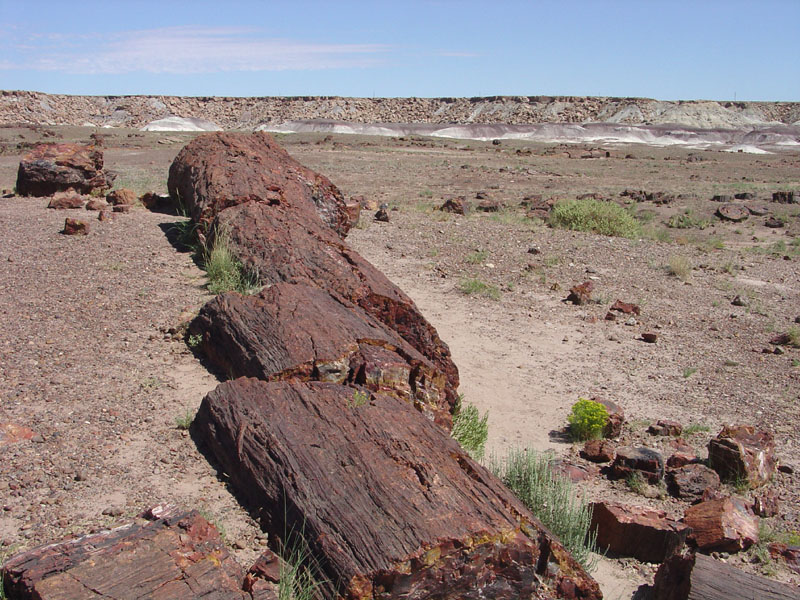| A fossil log along the Giant Logs Trail. Note the large, dark chunks of fossil wood scattered throughout the landscape. Fossil wood is most abundant in the Petrified Forest Member of the Chinle Formation (Late Triassic). The soft mudrock and shale that encase the fossils are rich in weathered volcanic ash. The escarpment in the distance is capped by a resistant layer of sandstone. The multitude of colors of the rock layers exposed throughout the park reflect a variety of ancient environmental conditions and the composition of the volcanic ash. Dark layers depict sediments deposited in anaerobic environments, such as the stagnant conditions in swamps and organic-rich flood deposits. The bright red, pink, yellow, and white layers are typically volcanic ash beds or deposits of well-drained upland soils. The sand beds were likely deposited in migrating stream channels and bars, and overbank sand floods (splays). The volcanic ash probably came from ancient volcanic areas to the west (in the California and Nevada region) (Riggs and others, 2003). The large tree trunks now preserved as fossil wood were probably buried by mud from ancient floods. The anaerobic conditions in the mud and the rich supply of silica from volcanic ash both contributed to the preservation of the fossil logs (NPS, 2006). |

